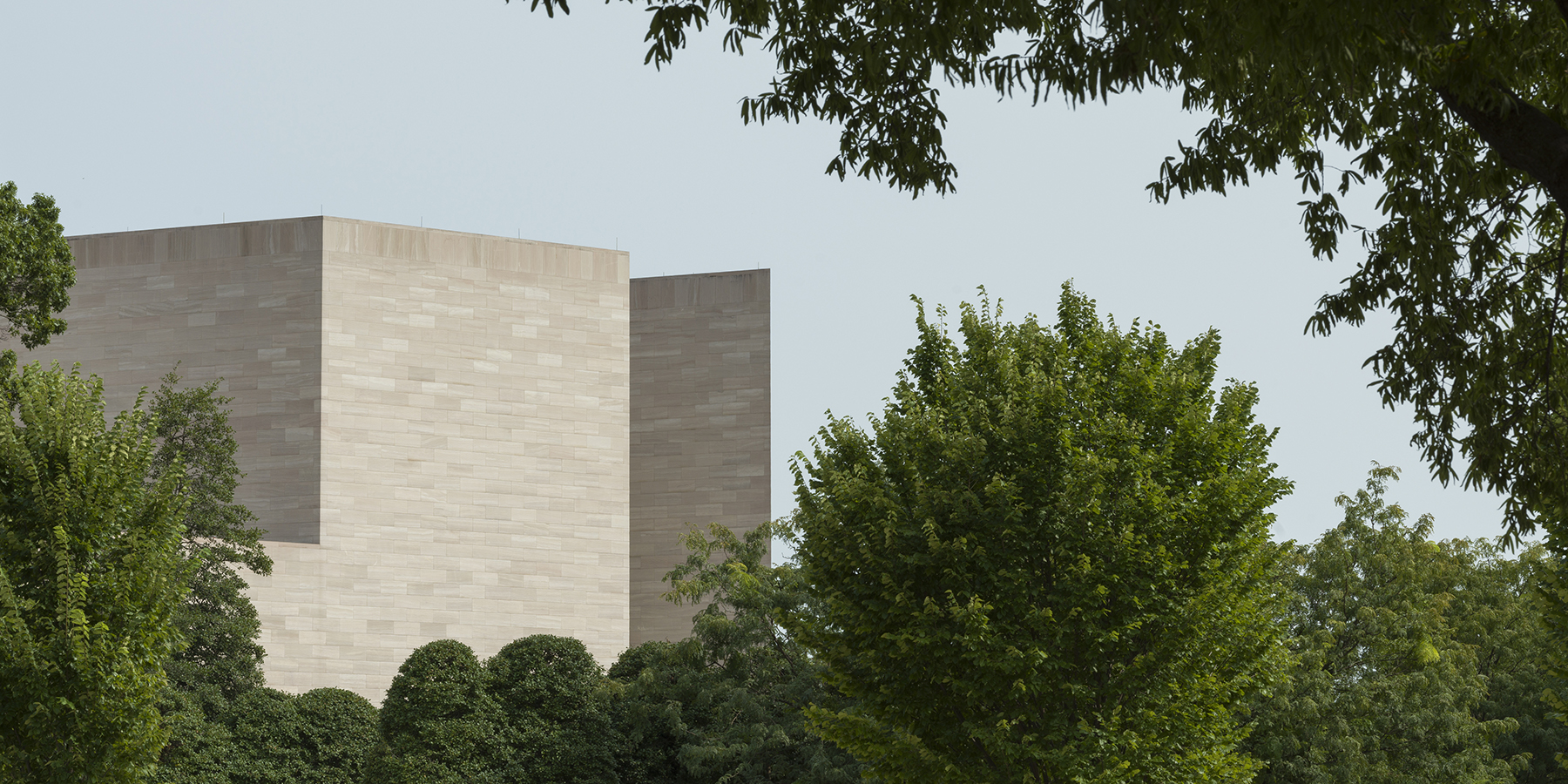I researched and conducted an inventory of all publicly accessible Black statues “in the round” within city limits. My criterion for “in the round,” or fully formed three-dimensional figures, became a subtle but significant point: it underscored how Black stories are often not fully articulated within our shared societal landscape. Take, for example, the model for the highly acclaimed Shaw 54th Regiment Memorial by Augustus Saint-Gaudens (1848–1907) at the National Gallery of Art, a commonly cited sculpture whenever I shared my research topic. For starters, it is located inside a museum building; while free for the public to access, it is not freely accessible in public. More importantly, the memorial’s Black figures are only depicted in high bas-relief and are not separately distinguished as individuals. Not only is the sculpture named after the lone white male present, but Robert Gould Shaw is the only person depicted literally on his high horse—communicating rank, importance, and respect for Shaw, but also silently speaking volumes about the relative worth of Black existence. In contrast, during the course of my research I truly grew to appreciate the statues of Mary McLeod Bethune in Lincoln Park or Carter G. Woodson in Carter G. Woodson Memorial Park, only because of their rarity—they were two of a small handful of Black statues I did discover on public display, fully “in the round,” or with 360-degree views of the subject’s person. Given the history of Black presence in Washington, DC, and given the representative nature of art especially within our nation’s capital, I was surprised I did not discover more such Black statues. Hence, I remain intrigued to better decipher the meaning of the presence of publicly shared Black figures currently in existence.
Frederick W. Gooding, Jr.
How Black Statues Reflect Our Society’s Race Relations at a Standstill
Over the course of the past decade, Confederate statues have come under renewed scrutiny, with many being removed in recent months. This dynamic spurred me to wonder: How many statues that are part of our societal and geographical landscape actively promote Black images? My working hypothesis was that by studying Black statues within the nation’s capital, I would find three-dimensional evidence of significant Black presence, symbolizing Black inclusion. Washington, DC, is uniquely positioned to showcase such iconography given its representative nature: the capital of a country built upon principles of fairness and equity for all citizens, designed accordingly with a highly structured, planned, and ordered layout. DC also is a city with an especially high concentration of African Americans.

Augustus Saint-Gaudens, The Shaw 54th Regiment Memorial, 1900, patinated plaster, US Department of the Interior, National Park Service, Saint-Gaudens National Historic Site, Cornish, New Hampshire, X.15233

Hiram Powers, The Greek Slave, model 1841–1843, carved 1846, Seravezza marble, National Gallery of Art, Washington, Corcoran Collection (Gift of William Wilson Corcoran), 2014.79.37
The National Gallery library, archives, and staff were instrumental in contextualizing public architecture and form within Washington, DC, generally. What I learned is that many of the principal federal buildings located within the Federal Triangle and on the National Mall boldly employ a neoclassical architectural style. This style was chosen to explicitly communicate that the grand ideals upon which the country was founded were indeed real and worthy of global respect. To reproduce neoclassicism, many American sculptors learned from European artisans, creating statues and sculptures of human figures that were white in racial depiction as well as literally white in physical appearance, with Hiram Powers’s Greek Slave one well-known example. Some 19th-century scholars subscribed to the notion that the color white symbolized purity of societal ideals and represented the ideal human form, although we now know that many ancient Greco-Roman sculptures were in fact painted.
My research illustrated that, more than mere “art in the park,” public Black statues are powerful political portraits that reveal much about the value and visibility of African Americans within society. Consequently, the absence of Black presence from public architecture can also represent an express exclusion from public discourse and, thus, public power. Materially and spatially, the scarcity of Black presence in public art reflects the historical lack of Black American political power and access to public resources.
Public architecture, while enjoyed by all, is fostered, financed, and facilitated by substantially smaller groups or committees of individuals. Hence, as I continue my research for my book manuscript, I have expanded my working hypothesis—that Black statues symbolize Black inclusion—to also engage the following question: Who is the “we” that determines who represents “us”? Since my Center fellowship concluded, many communities nationwide, from Richmond, Virginia, to Nashville, Tennessee, continue to wrestle with similar questions around public statues, asking whether they accurately reflect an ever-evolving and increasingly diverse society. In the wake of public pressure to “cancel” Confederate memorials, as public spaces once again become political battlegrounds, reevaluating the metaphorical content of Black public images can help decipher how its iconography reflects political power and social inclusion.
To the extent that Black statues are not part of Washington’s public spaces, their absence may only silently support existing social hierarchies founded on white male patriarchy and supremacy. Given the engaged and intricate history of Black Americans, it is revealing to analyze Black statues as political tools that evince and establish Black presence—and to truly look to see what they stand to tell us.
Texas Christian University
Leonard A. Lauder Visiting Senior Fellow, summer 2021
Frederick Gooding, Jr., will return to his position as the Dr. Ronald E. Moore Endowed Professor in the Humanities in the John V. Roach Honors College at Texas Christian University, where he will continue his research for a forthcoming manuscript about Black statues.
